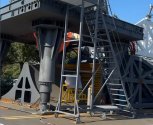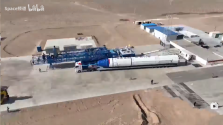For reference China's low earth orbit upmass capability (emphasis on capability, this isn't what was sent but what could have been sent if every launchers were used to its maximum capability) in 2024 was 430 tons, in 2025 it's currently 530 tons and, if all the planned launches up until the end of the year go well (realistically, maybe 2/3 will happen), one could expect it to reach 730 tons.
Based on the past 6 months and realistic launch plans, If there suddenly was a need to launch a mass produced payload in low earth orbit, with
only expendable launches, I believe CASC and other chinese companies could conservatively launch >1,000 tons in 2026.
(For comparison, US upmass
capability in 2025 will probably reach ~3,100 tons, and maybe 4,500-5,000 tons can be realistically expected in 2026)
So launch certainly isn't the problem at all for a Brillant Pebble type system. There are many other more important problems.
A Starship-like launch system does open opportunities for some other ABM systems, such as high orbit high power directed energy systems which wouldn't clutter LEO, but it's massively overkill for a Kinetic kill vehicle constellation.
----
Zenkspace seems to be testing their portable launch pad, considering the core team are former Space Pionneer pros who worked on Tianlong 2, and looking at the design of the pad it's very likely they're launching from Jiuquan's LC-120 launch site.
View attachment 165023View attachment 165024View attachment 165022
TL-2 pad & LC-120 for comparison
View attachment 165025
View attachment 165026





